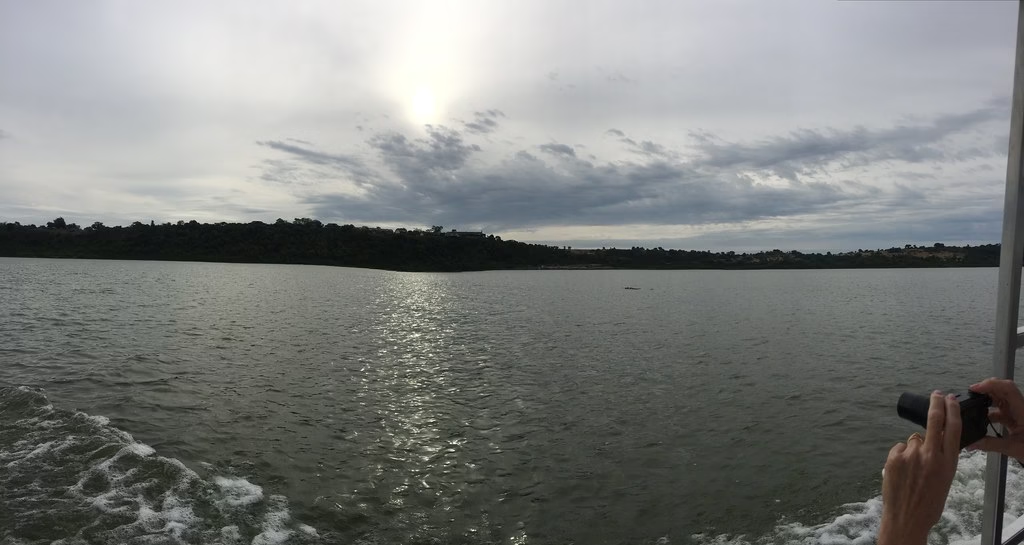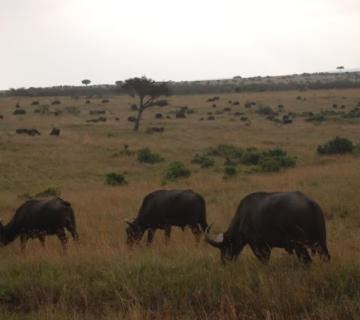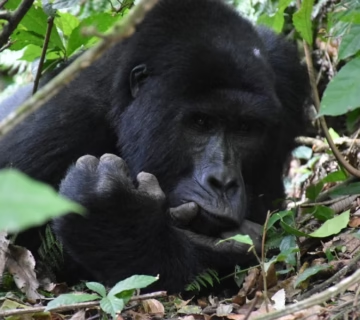Lake Edward in Queen Elizabeth National Park
One of the water bodies in Queen Elizabeth National area, Lake Edward / Uganda enhances the natural appeal of the area. It ranks fifteenth among the large lakes in Africa and is the smallest rift valley lake in Uganda.
Geography and hydrology of lake Edward
The Lake lies in the western part of Uganda in the Kasese District. About 29% of the lake’s surface area is shared by Uganda and the democratic republic of Congo (71% of the lakes surface area). Edward’s northern coast runs alongside the equator’s main latitude line.
Though modest in size, this lake is quite remarkable in the Albertine Region. Nestled on the border of the democratic republic of Congo and Uganda, Lake Edward is in the western branch of the East African rift basin. The Lake encompasses 2325 sq km in length and width; Lake Edward is maximally 38km or 84 miles long and nearly 25 miles broad. The lake is not very deep; its deepest end lies close to the western coast next to the cliff.
With 39.5cu.km almost, 9.5cu mi, the lake boasts the highest water volume. The primary inflows of the lake include River Ntungwe, River Ishasha, River Ntungwe, River Rutshuru, and River Rwindi and River Lubilia towards the south. And river Semliki is the main source into Lake Edward. Kazinga channel also, but its influence is the least.
Lake Edward’s wildlife
Clear view of the splendor of nature at the so-called mountains of the moon or Mountain Rwenzori at the Lake. Lake Edward borders the wide plains of Queen Elizabeth National Park, a savannah. From Lake Edward, the queen Elizabeth savanna plains are quite breathtakingly beautiful. Edward’s seashore is home to buffaloes, elephants, crocodiles, hippos, and other species; moreover, the skies above his coast is a playground for many different kinds of birds.
Many fish species call The Lake home, hence fishing is the highly exciting and profitable activity for the people who visit this area. Among the other fish species not mentioned, it boasts Bugrass Docmak, Oreo Chromil, Leocosticus, Haplochromis, and Hapochlomine. Apart from the north’s Ishango village, which forms a part of the democratic Republic of Congo (DRC), its coasts lack human habitation for unknown reasons.
ETYMology of Lake Edward
Before it was baptized a new name of Edward in 1888 by the first European adventurer called Sir Henry Morton Stanley, this lake was known as Mwitanzige or Rutanzige or Edward Nyanza. Later on under Idi Amin dada’s presidency of Uganda, he gave the lake Edward his name; Lake Idi Amin Dada, but the name did not remain for very long; the collapse of Idi Amin and his government returned back the lake’s name, lake Edward. Named for the Prince of Wales, also the son of England’s second Queen Elizabeth, Edward the 7th
Clearly visible from Lake Edward are the albertine rift region’s montane woods. Virunga national park in the Democratic Republic of Congo borders it; Semliki River Valley Game Reserve in the north western coast; marshes including rutshuru, rwindi, and ishasha river swamps in the north eastern shore of Edward.



